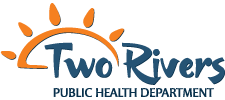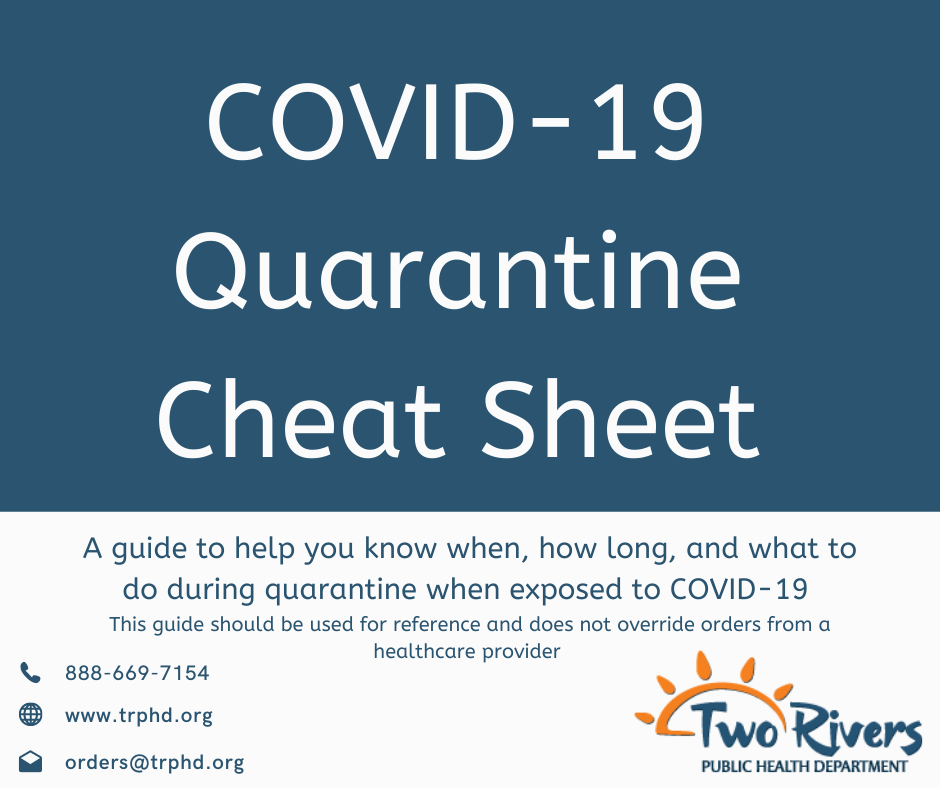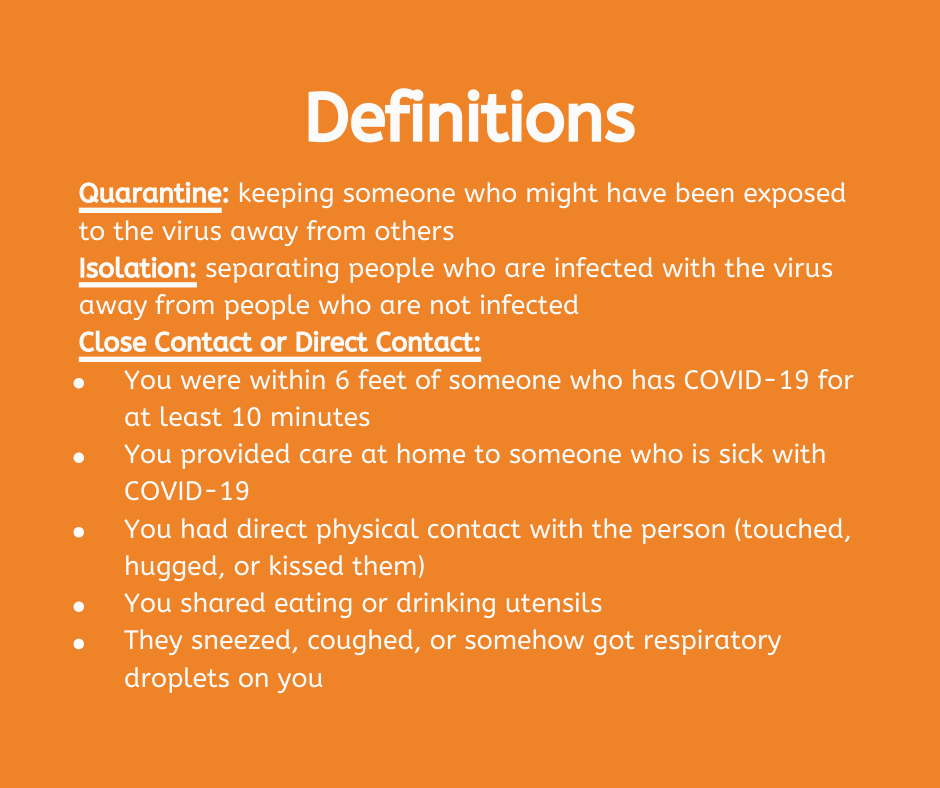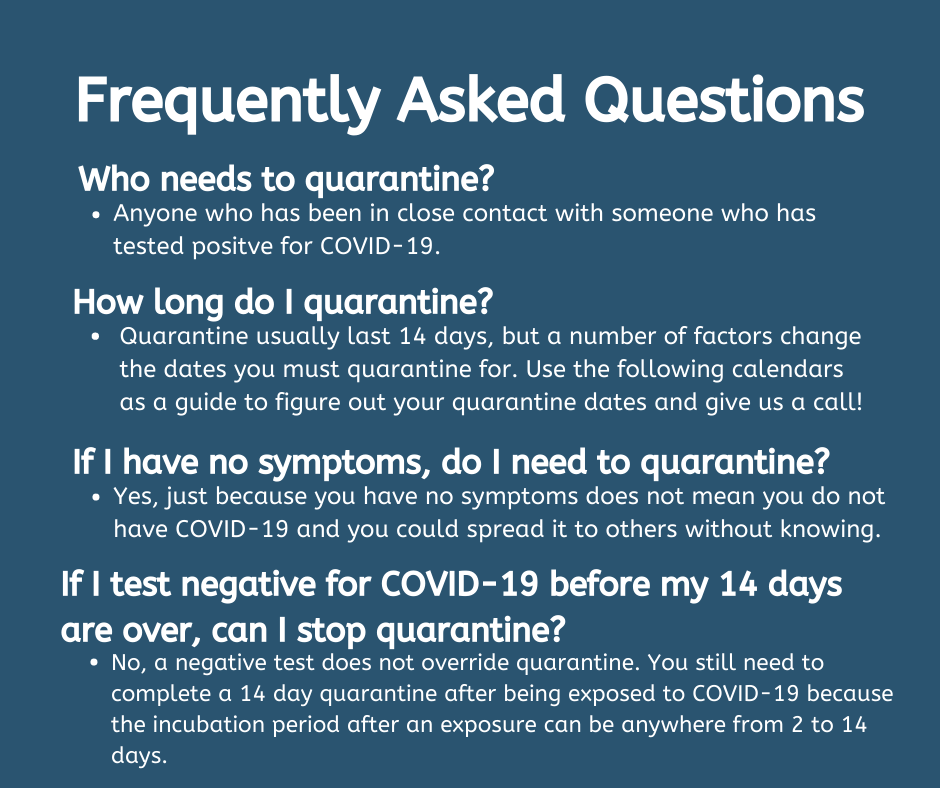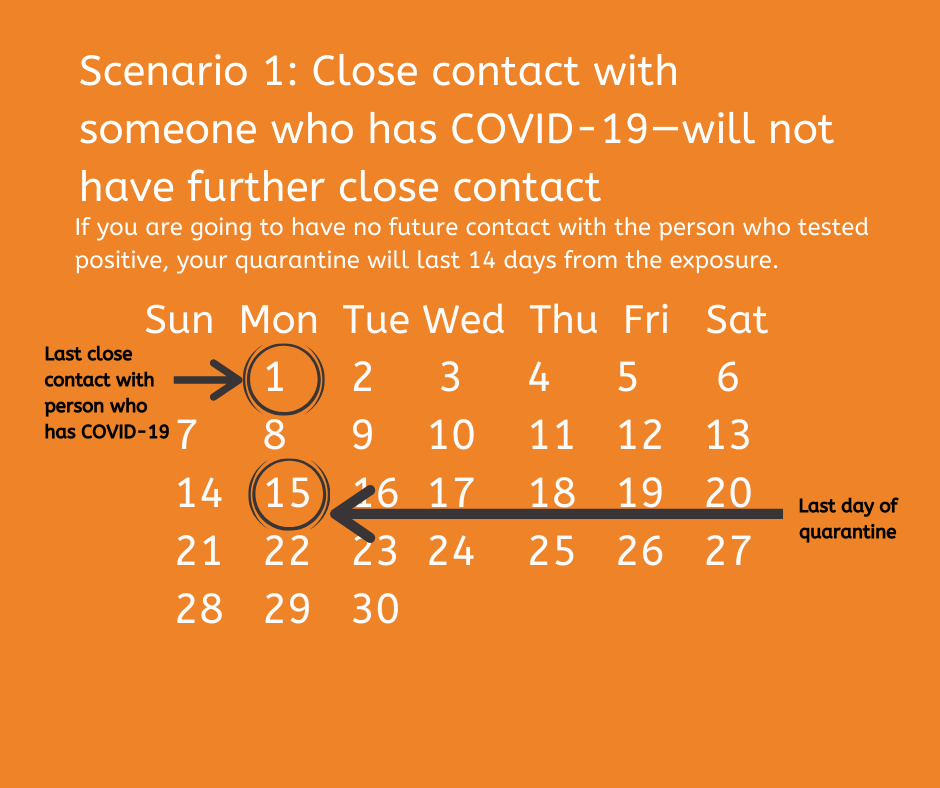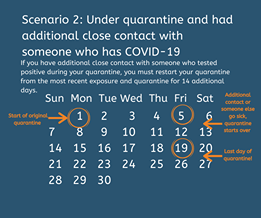COVID-19 Resources for Individuals
-
Our community is pulling together resources to assist individuals and businesses in preparing for COVID19.
-
How is the Public Health Department collecting info?
Is my Info safe and protected?
How are race and ethnicity identified by the health department?
And many more questions answered.
-
Based on what is currently known about the virus, spread from person-to-person happens most frequently among close contacts (within about 6 feet). This is CDC guidance about recommendations for you to use in your home.
-
This list is composed of cleaners that are expected to be effective against COVID-19 based on data for harder to kill viruses. Follow the manufacturer’s instructions for all cleaning and disinfection products (e.g., concentration, application method and contact time, etc.).
Guidelines for Individuals to Stop the Spread of COVID-19
Definitions
Social Distancing- Practicing social distancing means individuals are consciously avoiding gatherings of people. These individuals may choose to avoid concerts, church, and visit businesses only when necessary. Those practicing social distancing may avoid handshakes and hugs, and will stand an appropriate distance from others when speaking. Individuals who practice social distancing are may still need to attend public places.
Self-isolation- Self isolation requires individuals to stay home. Those who are self-isolating are not visiting any stores, gatherings or churches at all. These individuals should alert others that they are being monitored and/or have COVID-19 symptoms. Individuals who are self-isolating should limit contact with other persons in the same household.
Frequently Asked Questions About Coronavirus Disease 2019 (COVID-19)
How does it spread?
The virus is thought to mainly spread from person to person.
- Between people who are in close contact (within about 6 feet)
- Through respiratory droplets produced when an infected person coughs or sneezes
- People are thought to be most contagious when they are most symptomatic
- Some spread might be possible before people show symptoms. The health department assesses risk for individuals who are in close contact with the individual who has a laboratory confirmed positive test for 48 hours prior to onset of symptoms.
What is community spread?
Community spread means people have been infected with the virus in an area, including some who are not sure how or where they became infected.
How is the public health department collecting information about patients?
Two Rivers receives initial information about patients from the information provided by the individual at the moment of testing. Initial information includes: phone numbers, first and last names, address, telephone numbers, and date of birth; all information gathered from the ID shown by the person at the time of testing. If the person tests positive for COVID-19 then the case will be passed to a case investigator for follow-up. If the person tests negative, then they will receive a call informing them of their negative result and no further information will be gathered.
After the initial information is received by our department, case investigators will then determine which necessary information is missing from the case before it can be considered “close” Additional information concerning information like race/ethnicity, duration and severity of symptoms, and hospitalization status, is gathered by case investigators who make individual calls to patients. If needed, language interpreters will also assist in calls to ensure that all patients can be reached. All provided information is confidential and safe, individual identifiers (like name and address) are masked during data analysis and information which is shared publicly only tracks broad trends at a population level.
If I choose to share my information with Two Rivers Public Health Department, is my information safe and protected?
Two Rivers uses end-to-end encryption for all public health data that is shared or analyzed by the health department, as well as online tools such as citrix or sharefile. We use standard protocols for the storage and disposal of paper records as well to ensure confidentiality and security of any patient data which is shared with or stored by TRPHD. Transferring data between individuals in the health department is done through internal emails. If data is used for research or reporting purposes, first and last names of patients are not used or associated with their data. Data is reported and analyzed by county rather than zip code or individual address.
How are race and ethnicity identified by the health department?
Two Rivers Public Health Department adheres to the same standards for qualifying race and ethnicity which are used by the US Census and Office of Management and Budget (Office of Management and Budget, 2007) . The categories used for race are as follows:
● White- A person having origins in any of the original peoples of Europe, North Africa, or the Middle East.
● Black or African American- A person having origins in any of the black racial groups of Africa.
● American Indian or Alaska Native - A person having origins in any of the original peoples of North America, and who maintains cultural identification through tribal affiliations or community recognition.
● Asian- A person having origins in any of the original peoples of the Far East, Southeast Asia, or the Indian subcontinent. This area includes, for example, Cambodia, China, India, Japan, Korea, Malaysia, Pakistan, the Philippine Islands, Thailand, and Vietnam.
● Native Hawaiian or Other Pacific Islander- A person having origins in any of the original peoples of Hawaii, Guam, Samoa, or other Pacific Islands.
● Other
Ethnicity identifies an individual as Hispanic/Latino or not Hispanic/Latino, as prescribed in the 2018 memorandum to the Office of Management and Budget’s (OMB) Revisions to the Standards for the Classification of Federal Data on Race and Ethnicity (United States Department of Commerce, 2018). This standard is the same used by the US Census. All data concerning race and ethnicity is self-identified by the individual patient.
Why is the health department gathering data on race and ethnicity on patients?
Data concerning race and ethnicity is beneficial to epidemiologists and contact tracers in determining future spread of infection over populations or specific areas. Data also helps the department understand the differential risk of infection among residents of the health district and target health education strategies to best serve our community. If the individual chooses to disclose their race and ethnicity to the health department, that information is confidential and will only be shared within the health community for research purposes.
How are occupational categories used by the health department?
Occupational categories are used by the department for contact tracing and to determine areas in which mass testing is most needed. These refer to a collated variable that reflects the person’s primary occupation, industry and employer, further categorized by the department into occupational categories based on employer rather than individual activity. For example, non-clinical staff at a hospital (receptionist, janitor, etc.) would be categorized under “Healthcare Services” due to the environment in which he/she works. Similarly, a struck driver who works for a heavy manufacturing company would be categorized under “Transportation.”
Two Rivers has derived occupational categories from the Industry Code List used by the US Census and expanded certain occupations from the Industry Code List, mainly in the agricultural and food processing industries, to provide more detailed analysis specific to this region (United States Census Bureau, 2004).
Why is the health department identifying patients with occupational categories?
Occupational categories are used by contact tracers and epidemiologists to determine where clusters of positive cases within a community are coming from and how to best prepare the healthcare systems in the region for estimated increases or decreases in cases. The information is also beneficial in determining industries which could be at greater risk for high infection rates. Associating individuals with occupational categories is extremely helpful to the health department in best serving the community and ensuring that the rates of positive cases stays as low as possible.
How is the quality and accuracy of data ensured by Two Rivers Public Health Department?
Data is collected and stored in a state-wide, well-established database that is monitored and maintained daily to ensure protection and organization of data. Once data is input to the database, additional information on patients is then added or checked by human monitors to ensure that information is accurate and not in conflict. Diagnostic tests are then run on the final data to check for accuracy and outliers which could decrease the accuracy and quality of overall analysis and reporting within the state.
How is data fidelity maintained and upheld by Two Rivers Public Health Department?
Data used for research, analysis, and reporting purposes is taken only from the state-wide database- Nebraska Electronic Disease Surveillance System (NEDSS). The department maintains a strict adherence to using only data from this state-wide system to ensure that data cannot be misconstrued or altered to suit the needs of individual professionals.
In 1999, Nebraska was the first US state to create and utilize a web-based laboratory test ordering and reporting system, named Public Health Laboratories Information Program (PHLIPS). The system was upgraded in 2005 to the ELIRT system and the state currently uses another upgraded version NuLIRT, which tracks testing done for diseases, such as West Nile or STDs, in the state of Nebraska. The NEDSS database that TRPDH primarily uses is designed to enhance the transmission, speed, quality, and availability of information related to tracking of communicable diseases. Following in the practice of adopting good data safety practice, Nbraska was the first state in 2003 to adopt the system which was developed by the CDC, all local health departments would be brought online by 2005. The NEDSS and NuLIRT databases were created and are maintained by state resources with the purpose of informing and benefiting the people of Nebraska, therefore, our department is concerned only with the data that is gathered by these trusted systems for the sole purpose of supporting and benefiting the communities we work with.
What kinds of tests are labs in Nebraska currently conducting to test for COVID-19?
Testing labs in Nebraska are currently conducting one of five different kinds of tests to detect COVID-19:
● SARS COV 2 RNA(COVID19), QUALITATIVE NAAT
● 2019 Novel Coronavirus RNA panel
● SARS-CoV-2 RNA Resp Ql NAA+probe
● SARS-CoV-2 RdRp gene Resp Ql NAA+probe
● 2019-nCoV RNA Pnl XXX NAA+probe
References
Office of Management and Budget. (2007). Revisions to the Standards for the Classification of Federal Data on Race and Ethnicity. Retrieved from https://nces.ed.gov/programs/handbook/data/pdf/Appendix_A.pdf
United States Census Bureau. (2014). Industry Classification. Retrieved from: https://www2.census.gov/programs-surveys/cps/methodology/Industry%20Codes.pdf
United States Department of Commerce. (2018). 2020 Census Program Memorandum Series: 2-18.02. Retrieved from: https://www2.census.gov/programs-surveys/decennial/2020/program-management/memo-series/2020-memo-2018_02.pdf.
